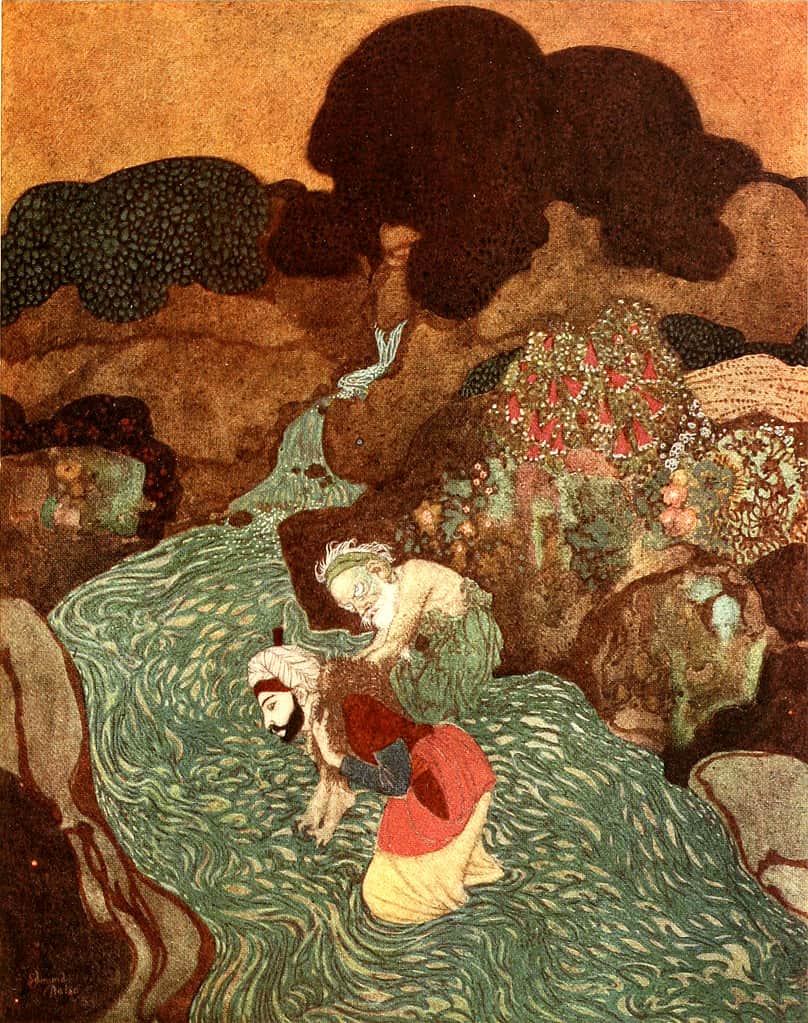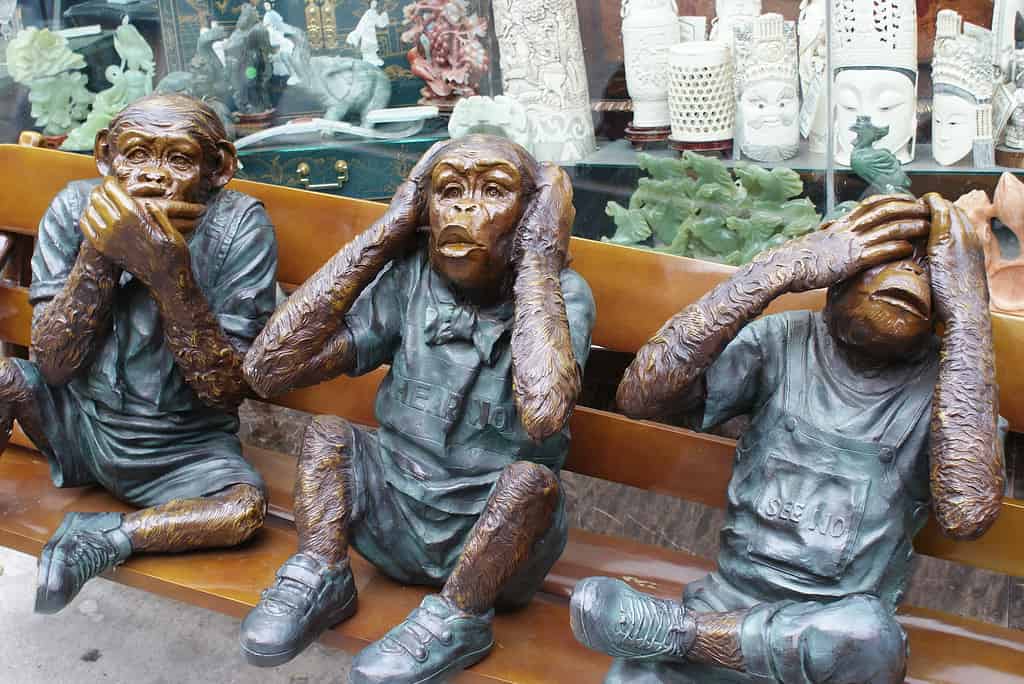An idiom is a phrase or expression that can never be understood simply by looking at the meaning of the individual words in the phrase. The combination of the literal elements of the idiom gives the expression its non-literal but commonly understood meaning. For example, if someone suggests it is “raining cats and dogs,” we all understand that pets are not falling from the sky. The idiom simply means that it is raining quite hard.
There are plenty of monkey idioms in the English language, such as “monkey business,” “monkey around,” “more fun than a barrel of monkeys,” “I’ll be a monkey’s uncle,” and “not my circus, not my monkeys.” However, one of the most common of these idioms has been around for over a hundred years, with roots stretching much further back than that: “a monkey on one’s back.”
To have a monkey on your back is a metaphor for a vexing, difficult, and unrelenting problem that will not go away. Often it refers to drug or alcohol addiction, but it can be used for any longstanding burden.
Some examples:
- “I had that monkey on my back for ten years before I got sober.”
- “I’m looking for a job, but my lack of a college degree is a monkey on my back.”
- “I was in a hitting slump, but I finally got the monkey off my back with a couple of home runs today.”

She’s got a monkey on her back!
©iStock.com/the4js
Origin of the Idiom
The precise origin of the metaphor can’t be conclusively proven. It may have originated with the Arabian Nights tales, which date back several centuries. In one of these tales, Sinbad the Sailor carries an apelike creature or man on his back across a stream. Once across, the creature would not leave Sinbad’s back.

Sinbad the Sailor carried an apelike creature on his back.
©Edmund Dulac / Public domain – License
There is also the medieval story of a monkey that was pursued by hunters. This monkey mother had twins, but she loved one much more than the other. The mother grabbed the baby she loved in her arms while the other jumped on her back. The mother eventually became too tired to carry her beloved baby in her arms and was forced to drop the youngster as she ran from the hunter. However, the “problem child” still clung tightly to her back. This may not be the actual origin of the idiom, but the symbolism certainly fits with the modern understanding of the metaphor.
The most likely origin of the idiom, though, was a reference to the devil. Historically, monkeys have been associated with all manner of things evil and demonic. This may be because these primates appeared to be a distorted caricature of human beings.
This connection even made its way into the black colobus monkey’s name. It is also known as the satanic black colobus, with the scientific name Colobus satanas. The Latin word satanas, from which we derive the word satan, originally comes from the Greek language. It translates as “the accuser” or “the devil.”
In Eastern symbolism, monkeys often represent a distracted mind. This was probably due to a monkey’s clamorous and incessant chatter.

The black colobus has the devil right there in its name:
Colobus satanas.
©feathercollector/Shutterstock.com
Monkeys in Modern Literature
Monkeys are still seen as mischievous and naughty. It shows up in the ways they are used as devices in literature. It even holds true in children’s literature. Consider the exploits of Curious George, for example. That monkey is always getting into trouble! Although, since Curious George has no tail, he is probably a chimpanzee. Chimps are apes, not monkeys. But since we’re discussing idioms, we won’t be slaves to the literal in this case.
Then there are the much more sinister (and terrifying) winged monkeys in L. Frank Baum’s book, The Wonderful Wizard of Oz. Between the book and the 1939 movie adaptation, monkeys became the stuff of nightmares for millions.
C.S. Lewis also used a monkey/apelike creature as a literary device in his 1963 work The Last Battle. This creature dresses a donkey as a lion, creating a false Aslan that he uses to lead Narnia astray.
Baum and Lewis both use monkey imagery to convey evil, deceit, and danger. These fit well with the implied malevolent evil that plagues a person when they have a “monkey on their back.”
Other animals would not convey the same emotions and images in the metaphor. For example, it doesn’t seem pernicious to suggest someone has a puppy on their back, does it? No one is going to feel plagued by a bunny on their back. The idiom only works because it taps into the mischievous, fiendish, and even demonic images many people hold regarding monkeys.

Monkeys are often seen as mischievous little creatures.
©NLPD / CC BY 3.0 – License
Evolution of the Idiom
In the nineteenth century, having a monkey on your back meant you were angry. The idiom then evolved closer to its current meaning of a difficult, ongoing trial or problem.
In the 1930s, the idiom became connected with addiction. While it was originally used to describe heroin addiction, it grew into a metaphor used to describe addiction to any drug or alcohol.
The Idiom in Pop Culture
In Film
A 1953 biographical film called Monkey on My Back chronicles the life of Barney Ross, a world champion boxer and a decorated World War II veteran who struggled with drug addiction after the war.
In Song
George Michael used the idiom in a 1988 song that he wrote simply entitled, “Monkey.”
Michael’s official website described the song as a “drug abuse saga.” The song is sung from the perspective of someone who is dating a drug addict.
This person warns their beloved:
Watch out, baby who’s that?
Don’t look now, there’s a monkey on your back.
The exasperated lover later asks the question:
Why can’t you set your monkey free?
Always giving in to it
Do you love your monkey or do you love me?

George Michael wrote “Monkey,” using the “monkey on one’s back” idiom to describe drug addiction.
©Insasse / CC BY-SA 2.5 – License
On Television
In a 2003 episode of The King of Queens, the lovable curmudgeon Arthur Spooner refers to his own addiction as “a monkey on my back.” Of course, he was hooked on over-the-counter nasal sprays, but that’s just Arthur being Arthur.
In Comedy
George Carlin, the opinionated and controversial comedian, once quipped, “Just ‘cause you got the monkey off your back doesn’t mean the circus has left town.” Some say it is a reference to the problems that remain after conquering an addiction.
The Idiom in Real Life!
Many monkey mothers will actually carry their babies on their backs, bringing the figurative idiom to life. Of course, the moms toting these babies on their backs don’t view their youngsters as a problem or burden. Well, not always, anyway!
For example, baby baboons often hitch a ride on their moms’ backs, as seen in the video below.
Or how about this young macaque? The baby was riding on mom’s back until it decided that it would rather play in a puddle. Kids will be kids, after all.
And, because the internet is undefeated, there is also a video of a monkey riding on a dog’s back.
Along with monkeys, mothers in many ape species also carry their babies on their backs, as well. Young bonobos, chimpanzees, gorillas, and orangutans are known to ride on their mothers’ backs.
When humans carry children on their backs, it is often referred to as a “piggyback ride.” That’s an interesting idiom, considering pigs don’t carry their young on their backs. But that is the subject for another article.
In the meantime, keep that monkey off your back!
The photo featured at the top of this post is © Gigoliver/Shutterstock.com
Thank you for reading! Have some feedback for us? Contact the AZ Animals editorial team.






